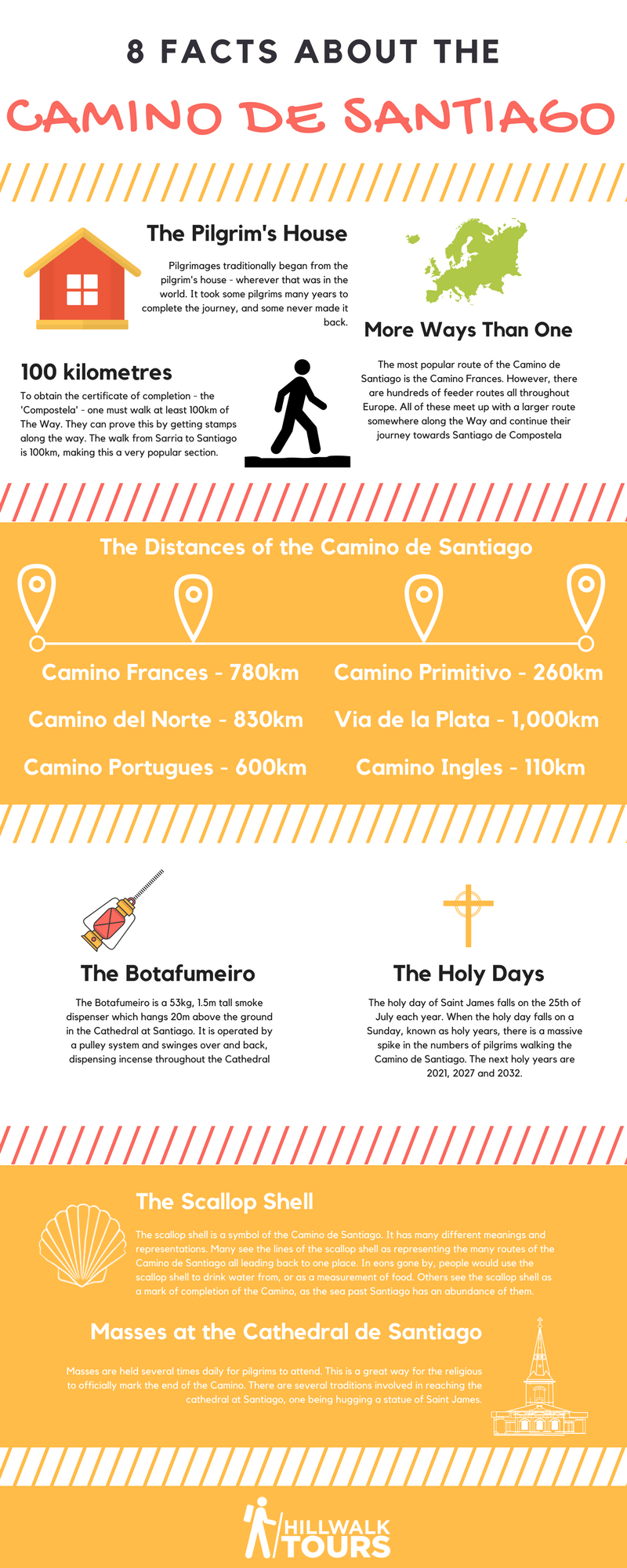Would you like to know some interesting facts about the Camino de Santiago? Take a look at our Camino infographic below to find out more!
Fancy walking the Camino de Santiago yourself?
Check out our Camino Frances walking tours!
The Pilgrim’s House
Pilgrimages traditional began from the pilgrim’s house – wherever that may be in the world.
It took some pilgrims many years to complete the journey, while some never made it back.
100 Kilometres
To obtain the certificate of completion – the ‘Compostela’ – one must walk at least 100km of The Way.
This can be proven by getting stamps at the accommodations along the route.
The walk from Sarria to Santiago is 100km, making this section a very popular part to walk.
More Ways Than One
The most popular route of the Camino de Santiago is the Camino Frances.
However, there are hundreds of Camino routes all throughout Europe.
All of these meet up with a larger route somewhere along the Way and continue their journey towards Santiago de Compostela.
The Distances of the Camino de Santiago
The distances of the larger, more popular Camino de Santiago routes are:
- Camino Frances – 780km
- Camino del Norte – 830km
- Camino Portugues – 600km
- Camino Primitivo – 260km
- Via de la Plata – 1,000km
- Camino Ingles – 110km
The Botafumeiro
The Botafumeiro is a 53kg, 1.5m tall smoke dispenser which hangs 20m above the ground in the Cathedral at Santiago.
It is operated by a pulley system and swings over and back, dispensing incense throughout the Cathedral.
Holy Days
The holy day of Saint James falls on the 25th of July each year.
When the holy day falls on a Sunday, known as holy years, there is a massive spike in the numbers of pilgrims walking the Camino de Santiago.
The next holy years are 2021, 2027 and 2032.
The Scallop Shell
The scallop shell is a symbol of the Camino de Santiago. It has many different meanings and representations.
Many see the lines of the scallop shell as representing the many routes of the Camino de Santiago all leading back to one place.
In eons gone by, people would use the scallop shell to drink water, or as a measurement of food.
Others see the scallop shell as a mark of completion of the Camino, as the sea past Santiago has an abundance of them
Masses at the Cathedral de Santiago
Masses are held several times daily for pilgrims to attend.
This is a great way for the religious to officially mark the end of the Camino.
There are several traditions in reaching the cathedral at Santiago, one being hugging a statue of Saint James.



